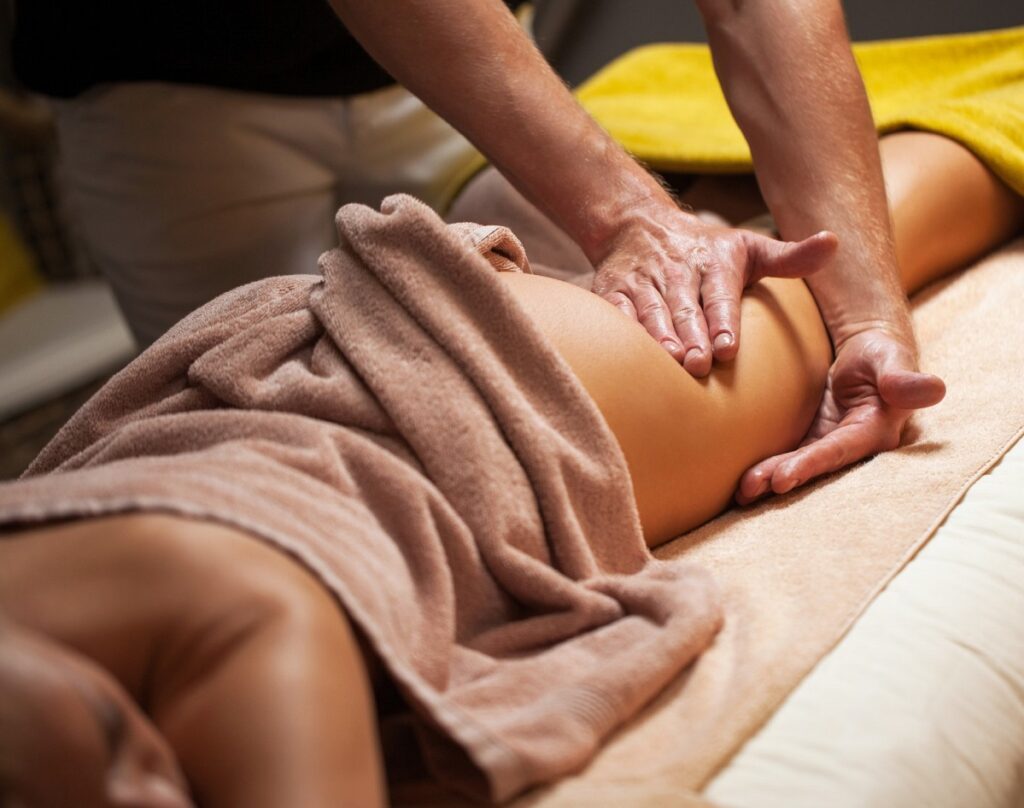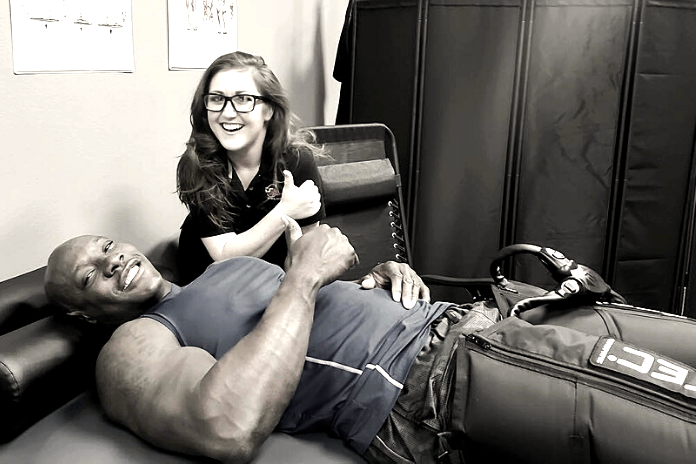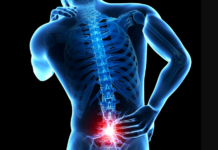We know massages feel great and can relieve tension. But do massages actually boost post-workout muscle growth? Surprisingly, there hasn’t been a proper study of this topic. Still, we investigated what the scientific evidence does say about the post-workout benefits of massages. Relax. You’re in good hands.
BENEFITS OF MASSAGES
IMPROVED CIRCULATION
Massages can enhance blood flow to the muscles, which delivers essential nutrients and oxygen necessary for muscle repair and growth. Increased circulation can also help remove metabolic waste products that accumulate in muscles during exercise, potentially reducing muscle soreness and fatigue.
REDUCED MUSCLE TENSION
Massage therapy can help alleviate muscle tension and tightness by loosening up knots and trigger points. When muscles are less tense, they can move more freely and efficiently during workouts, potentially leading to better muscle activation and growth.
ENHANCED RECOVERY
Massages are commonly used as a recovery tool by athletes and fitness enthusiasts. By reducing muscle soreness and inflammation, massages can accelerate the recovery process after intense workouts, allowing for more frequent training sessions and potentially greater gains in muscle mass over time.
RELAXATION
Massages can induce a state of relaxation by reducing stress and promoting the release of endorphins, which are natural painkillers and mood enhancers. When the body is in a relaxed state, it can devote more energy to repair and rebuilding processes, including muscle growth.

GUIDE TO DEEP TISSUE MASSAGE
Massage for muscle growth is different from a soothing spa rubdown. In fact, on the deep tissue side of the equation, it’s more painful than relaxing. Jay Cutler regularly received painful deep tissue massages when he was winning his four Mr. Olympia titles over a decade ago. Deep tissue may not be right for you, but let’s address exactly what it is.
PURPOSE
Deep tissue massage aims to release chronic patterns of tension in the body by applying firm pressure and slow strokes to reach deeper layers of muscle and fascia. It can help alleviate pain, improve flexibility, and promote workout recovery.
TECHNIQUES
Deep tissue massage therapists use various techniques to access deeper layers of muscle and tissue, including:
- Stripping: Firm, gliding pressure along the length of the muscle fibers to break up adhesions and release tension.
- Friction: Pressure applied across the grain of the muscle fibers to address muscle knots and adhesions.
- Trigger Point Therapy: Applying pressure to specific points of tension or “trigger points” to release tightness and alleviate pain.
- Myofascial Release: Gentle stretching and sustained pressure to release restrictions in the fascia, the connective tissue surrounding muscles.
- Cross-Fiber Friction: Deep pressure applied across muscle fibers to break up scar tissue and adhesions.
INTENSITY
Deep tissue involves firmer pressure compared to other techniques like Swedish. While the pressure can be intense, it should always be within the client’s comfort level and tolerance.
BENEFITS
Deep tissue massage offers numerous benefits, including:
- Relief from chronic muscle tension and tightness
- Reduction of pain and discomfort, including headaches, neck, shoulder, and lower back pain
- Improved range of motion and flexibility
- Enhanced posture and alignment
- Breakdown of scar tissue and adhesions, aiding in injury recovery
- Stress relief and relaxation
AREAS OF FOCUS
Deep tissue can target specific areas of the body prone to chronic tension and tightness, such as the neck, shoulders, upper back, lower back, and hips. It can also be applied to treat conditions like repetitive strain injuries, sports injuries, and postural imbalances.

DURATION
Deep tissue massage sessions typically last 60 to 90 minutes, allowing the therapist enough time to address specific areas of tension thoroughly.
PRECAUTIONS
While deep tissue massage can be highly effective, it may not be suitable for everyone. Individuals with certain medical conditions, such as blood clotting disorders or recent injuries, should consult with a healthcare professional before receiving deep tissue massage.
DOES MASSAGE HELP MUSCLE GROWTH?
We need more research on exactly how much massage can aid muscle growth. Until then, we do know it can boost workout recovery, relieve stress, and improve flexibility, all of which are factors in your size and strength gains. Whether you get deep tissue or more traditional massages, the important thing is to employ a skilled masseuse whom you feel comfortable with and who tailors the massage to your musculature.
SOURCES
While there’s ample anecdotal evidence supporting the benefits of massages for muscle growth, scientific research in this specific area is limited. However, here are some studies and reputable sources that discuss the potential effects of massages on muscle growth and recovery:
Crane, J.D., Ogborn, D.I., Cupido, C., et al. (2012), “Massage Therapy Attenuates Inflammatory Signaling After Exercise-Induced Muscle Damage,” Science Translational Medicine, 4(119).
Hilbert, J.E., Sforzo, G.A., & Swensen, T. (2003), “The Effects of Massage on Delayed Onset Muscle Soreness,” British Journal of Sports Medicine, 37(1), 72–75.
Moraska, A., Chandler, C., Edmiston-Schaetzel, A., et al. (2008), “Comparison of a Targeted and General Massage Protocol on Strength, Function, and Symptoms Associated With Carpal Tunnel Syndrome: A Randomized Pilot Study,” Journal of Alternative and Complementary Medicine, 14(3), 259–267.
Rapaport, M.H., Schettler, P., & Bresee, C. (2012), “A Preliminary Study of the Effects of Repeated Massage on Hypothalamic-Pituitary-Adrenal and Immune Function in Healthy Individuals: A Study of Mechanisms of Action and Dosage,” Journal of Alternative and Complementary Medicine, 18(8), 789–797.

















































